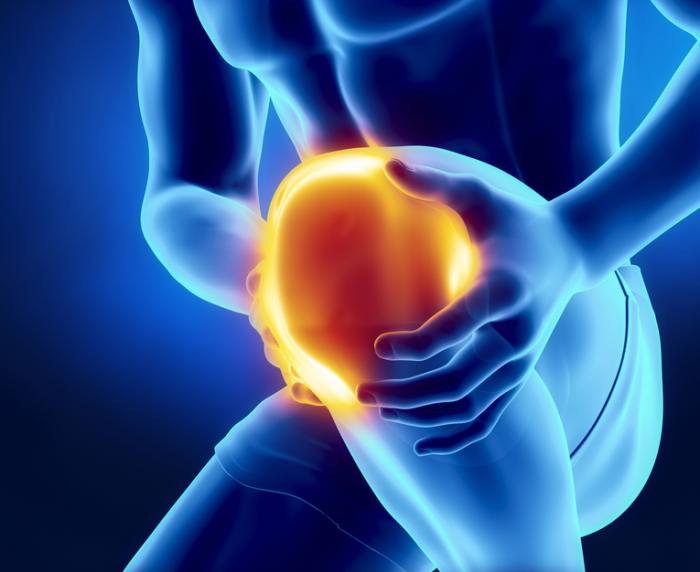Health
4 Things to Determine Before Undergoing a Knee Replacement Surgery

Knee replacement surgery is a life-changing event. It can relieve pain, restore mobility, and improve quality of life. But it’s a big decision for which you must be as prepared as possible. For example, the knee replacement surgery cost can vary depending on the hospital, geographic location, and the type of insurance coverage you have. So, you must be mentally as well as financially prepared.
Keep Necessary Assistive Equipment Ready
Post-knee replacement surgery, you may require assistive equipment to perform certain activities, such as walking, dressing, or going to the bathroom. These devices contribute to your safety during your recovery process.
The following devices may be necessary depending on your condition following surgery:
- Aids for walking, such as crutches, canes, and walkers
- Sock aids and Shoehorns
- Your home should be equipped with grab bars
- Tongs and Reachers
- Toilets with raised seats
- Chair for the bath
You may also find the following items helpful in making the process less stressful:
- Ice packs or wraps for swelling and pain relief
- When you are sitting down, place extra pillows beneath your leg and provide support
- An incision-site-friendly pair of trousers or shorts that don’t restrict movement or irritate the incision area
Prepare Your Home for Recovery
During the first few days and weeks following your surgery, you may experience difficulty walking and moving around the house. Taking steps to prepare your home for knee replacement surgery is imperative, as your body needs time to heal.
Here are some suggestions for making your home more comfortable and safer before you undergo surgery:
- Ensure that tripping hazards are moved to prevent falls. For example, you can trip or slip on items such as floor coverings, kid’s toys, power cords, and a generally cluttered environment. Therefore, you must keep the floor free of clutter.
- Maintain a minimum three-foot width for all pathways and shift furniture to allow easy walking. The recovery process will likely require using a walking aid, crutches, or the help of a loved one to walk for a while. Your recovery may be easier if you arrange your furniture in a way that permits you to move quickly around it.
- Keep items that you will need within easy reach. Depending on the complexity of your surgery, you may have difficulty bending down. Therefore, make sure that you store items of everyday need in a place where you can quickly access them without bending over. Picking up things low to the ground can also be made easier with a grabbing device.
- Make sure your bathroom is equipped with safety rails. This will ensure your safety and convenience while using the bathroom.
- Consider arranging your living space on one level. In the course of your recovery, you may have difficulty climbing stairs. Thus, your house’s living space should be adjusted as much as possible to accommodate your recovery on one level if your home has multiple floors.
Exercise Before Your Surgery
If you strengthen and condition your body before surgery, the recovery process can be improved in many ways. For example, using assistive devices like crutches or wheelchairs will be easier if your upper body is strong.
A pre-knee replacement exercise program can also help you lose weight, reducing the stress placed on your knees during and following the procedure. Research indicates that a weight loss of one pound can reduce knee pressure by four pounds.
In addition, if you suffer from knee pain, you may benefit from low-impact exercises, such as yoga, cycling, and swimming, before knee replacement surgery.
You can also minimise joint discomfort following the surgery by riding a stationary or regular exercise bike before knee replacement. This will increase your stamina, strength of your muscles, and flexibility.
Seek Assistance from Family and Friends
It is not uncommon for your body to feel fatigued during recovery. However, you can focus on healing by receiving support from friends and family. There are also a few things you must take care of before the surgery, like:
- Establish arrangements for caring for your children or pets, if necessary. Making sure your loved ones are well taken care of can ease any stress you may be experiencing.
- Arrange for assistance with errands. A few weeks following surgery, you will not be able to drive. It is therefore advisable to ask for help with activities such as shopping for groceries and prescription pick-up ahead of time.
- Create a meal schedule. Check with your family and friends to see if they can deliver meals to you during your recovery period. They may also help you prepare meals that can be frozen.
- Ask for assistance with household tasks and chores. For example, you might ask your neighbour to mow your grass for a few weeks or get a close relative to assist with housekeeping.
By making personal as well as financial arrangements, such as knee replacement surgery cost, a month in advance, you are more likely to feel less stress and tension. Furthermore, it allows your family and friends to keep their schedules flexible to assist you as you recover.
Conclusion
If your doctor has advised you to get a knee replacement, you should take care of the things mentioned above, including knee replacement surgery cost, before going through the surgery to ensure a simple and effective recovery process.
Read More Blogs:
Health
Nourish Your Life Today And Expand Your Life Span in 2024

In a world that often demands more than it gives, finding ways to nourish your life can lead to a more fulfilling and balanced existence. Nourishment goes beyond the food we eat; it encompasses our mental, emotional, and physical well-being. To truly nourish your life, it’s essential to cultivate habits and practices that promote overall health and happiness. This comprehensive guide will explore various strategies to help you nourish your life in every aspect.
1. Understanding True Nourishment
What Does It Mean to Nourish Your Life?
Nourishing your life means providing the necessary sustenance for your body, mind, and soul to thrive. It involves adopting a holistic approach that includes healthy eating, mental well-being, emotional balance, and physical fitness.
The Importance of Holistic Well-being
Holistic well-being recognizes the interconnectedness of the different aspects of our lives. By addressing all areas—physical, mental, emotional, and spiritual—we can achieve a state of harmony and balance.
2. Nourishing Your Body
Balanced Nutrition
Eating a balanced diet rich in fruits, vegetables, whole grains, lean proteins, and healthy fats is fundamental to nourishing your body. These foods provide essential nutrients that support overall health and vitality.
Hydration
Staying hydrated is crucial for bodily functions, including digestion, circulation, and temperature regulation. Aim to drink at least 8 glasses of water daily and adjust based on your activity level and environment.
Regular Exercise
Incorporating regular physical activity into your routine helps maintain a healthy weight, boosts energy levels, and improves mood. Choose activities you enjoy, such as walking, cycling, swimming, or yoga.
Adequate Sleep
Quality sleep is essential for physical health and cognitive function. Establish a consistent sleep routine and aim for 7-9 hours of sleep per night to ensure your body can rest and repair.
3. Nourishing Your Mind
Continuous Learning
Keeping your mind active through continuous learning helps maintain cognitive function and mental agility. Engage in activities like reading, puzzles, learning a new skill, or taking up a hobby.
Mindfulness and Meditation
Practicing mindfulness and meditation can reduce stress, enhance focus, and promote emotional stability. Start with a few minutes each day and gradually increase the duration as you become more comfortable.
Mental Health Support
Seeking support for mental health issues is crucial. Therapy, counseling, and support groups can provide valuable resources for managing stress, anxiety, depression, and other mental health conditions.
4. Nourishing Your Emotional Health
Building Resilience
Resilience is the ability to bounce back from adversity. Cultivate resilience by developing a positive outlook, practicing self-compassion, and maintaining a strong support network.
Emotional Expression
Expressing emotions in a healthy way is vital for emotional health. Journaling, talking to a friend, or engaging in creative activities like art or music can help process and express feelings.
Healthy Relationships
Building and maintaining healthy relationships contribute significantly to emotional well-being. Invest time in nurturing connections with family, friends, and loved ones.
5. Nourishing Your Spirit
Finding Purpose and Meaning
Having a sense of purpose and meaning in life is essential for spiritual nourishment. This can come from work, hobbies, volunteering, or other activities that provide a sense of fulfillment.
Spiritual Practices
Engaging in spiritual practices, whether through religion, meditation, or personal reflection, can enhance your sense of connection and inner peace.
Nature Connection
Spending time in nature can be incredibly grounding and rejuvenating. Activities like hiking, gardening, or simply sitting in a park can foster a deeper connection with the natural world.
6. Practical Steps to Nourish Your Life
Setting Goals
Set realistic and achievable goals that align with your values and passions. Having clear goals gives direction and purpose, motivating you to make positive changes.
Creating a Routine
Establishing a daily routine that includes time for self-care, work, and leisure helps create balance. Consistency in your routine can lead to better habits and improved well-being.
Self-Care Practices
Self-care involves taking deliberate actions to care for your physical, mental, and emotional health. This could include activities like taking a relaxing bath, reading a book, or practicing yoga.
7. Overcoming Barriers to Nourishment
Time Management
One of the biggest challenges to nourishing your life is finding the time. Prioritize your well-being by scheduling time for activities that nourish you, and learn to say no to commitments that drain your energy.
Staying Motivated
Maintaining motivation can be difficult. Surround yourself with supportive people, track your progress, and celebrate small victories to stay motivated on your journey.
Access to Resources
Access to resources like healthy food, fitness facilities, and mental health support can be a barrier. Explore community resources, online programs, and affordable options to overcome these challenges.
8. The Benefits of a Nourished Life
Improved Physical Health
Adopting nourishing habits can lead to better physical health, including increased energy levels, improved immune function, and reduced risk of chronic diseases.
Enhanced Mental Clarity
Nourishing your mind through continuous learning and mental health support can enhance cognitive function, memory, and mental clarity.
Greater Emotional Stability
Practicing emotional expression and building resilience can lead to greater emotional stability, reducing stress and improving overall mood.
Deeper Spiritual Connection
Engaging in spiritual practices and finding purpose can lead to a deeper sense of connection and inner peace, enriching your life experience.
Conclusion
Nourishing your life is an ongoing journey that requires intentional effort and commitment. By addressing all aspects of well-being—physical, mental, emotional, and spiritual—you can achieve a balanced and fulfilling life. Remember, small, consistent changes can lead to significant improvements in your overall well-being.
FAQs
1. How can I start incorporating mindfulness into my daily routine?
Begin with short sessions of mindfulness meditation, focusing on your breath and being present in the moment. Gradually increase the duration and try to incorporate mindfulness into everyday activities like eating and walking.
2. What are some affordable ways to improve personal well-being?
Affordable ways to improve well-being include practicing yoga at home, using free health apps, engaging in outdoor activities, and connecting with supportive communities online or locally.
3. How does wearable technology benefit personal well-being?
Wearable technology helps track physical activity, monitor sleep patterns, and provide health insights, enabling individuals to make informed decisions about their well-being and maintain healthy habits.
4. What are some effective stress management techniques?
Effective stress management techniques include mindfulness meditation, deep breathing exercises, physical activity, journaling, and spending time in nature.
5. How can I maintain a work-life balance?
Maintain a work-life balance by setting boundaries, prioritizing tasks, taking regular breaks, and ensuring time for personal activities and relaxation. Flexible working conditions and ergonomic workspaces also help in achieving this balance.
Health
How Europeans can use surrogacy in Ukraine to find their happiness

Surrogacy has emerged as a viable option for individuals and couples across the globe facing challenges with conception or pregnancy. Among the countries offering surrogacy services, Ukraine has gained prominence as a popular destination, attracting prospective parents from Europe and beyond. In this comprehensive guide, we delve into the landscape of surrogacy in Ukraine, providing insights, considerations, and essential information for European individuals and couples exploring this pathway to parenthood.
The Legal Landscape of Surrogacy
One of the primary draws of surrogacy in Ukraine for European intended parents is its favorable legal framework. Ukrainian legislation permits surrogacy arrangements, providing a clear legal pathway for establishing parental rights. The country’s laws prioritize the rights of intended parents, ensuring that they are recognized as the legal parents of the child born through surrogacy, with the surrogate and her husband (if applicable) relinquishing all parental rights.

Medical Expertise and Infrastructure
Ukraine boasts a robust medical infrastructure and a wealth of fertility clinics with advanced technologies and experienced professionals specializing in assisted reproductive techniques. Prospective parents can access comprehensive medical evaluations, fertility treatments, and surrogacy services tailored to their specific needs.
Surrogacy in Ukraine: Affordability and Accessibility
Compared to surrogacy options in other European countries or the United States, surrogacy in Ukraine is often more affordable, making it an attractive option for European individuals and couples seeking cost-effective alternatives. The relatively lower cost does not compromise the quality of medical care or legal protections, offering a compelling value proposition for prospective parents.
Ethical Considerations
While Ukraine provides a conducive legal and medical environment for surrogacy, prospective parents should approach the process with ethical considerations in mind. It is essential to prioritize the well-being and rights of all parties involved, including the surrogate, egg donor (if applicable), and the child. Open communication, transparency, and respect for the autonomy and dignity of the surrogate are paramount throughout the surrogacy journey.
Cultural and Logistical Factors of Surrogacy
European intended parents embarking on the surrogacy journey in Ukraine may encounter cultural and logistical differences. Understanding and navigating these nuances, including language barriers, cultural norms, and logistical arrangements, are integral to ensuring a smooth and successful surrogacy experience.
Surrogacy in Ukraine offers European individuals and couples a promising pathway to parenthood, combining legal clarity, medical expertise, affordability, and accessibility. By familiarizing themselves with the legal framework, medical infrastructure, ethical considerations, and cultural aspects of surrogacy in Ukraine, prospective parents can make informed decisions and embark on their journey to building a family with confidence and peace of mind.
Health
Treadmill Workouts: The Good, The Bad And The Ugly

Six Intense Treadmill Workouts have advanced. From a flat roller that was manually propelled to the newest motorized models with incline belt surfaces, LED display screens with plenty of exercise data, heart rate monitors, and customizable intensity levels to imitate hill training.
Treadmill Benefits
Treadmill ownership and training have several advantages. First, you may exercise in any weather. They seldom annoy others since they are quiet. Treadmills may be kept or concealed since they are portable. The best Six Intense Treadmill Workouts include a grip heart rate monitor and an LED display to indicate your workout time, distance, and calories burnt.
Sales Center
You’ve found the greatest Treadmill Black Friday bargains, even if Black Friday is past. A treadmill is a terrific way to stay active through winter’s long hours, whether you’re preparing for a marathon or just walking. If you’re establishing a home gym, you may store one in a spare bedroom, garage, or shed since they’re low-maintenance.
Six Intense Treadmill Workouts are expensive, but they save money over time since gym memberships add up.
These offers are still active, and NordicTrack, Bowflex, Peloton, and Echelon equipment are on sale for Cyber Monday. The NordicTrack Commercial 1750, our top treadmill, is $1,599 at Amazon (opens in new tab)—saving you $300!
Weight-Loss Treadmill
Six Intense Treadmill Workouts are wonderful weight-loss exercises. It lets you elevate your heart rate into the fat-burning zone in a controlled atmosphere, making it simple to monitor and adjust intensity.
Treadmill exercises to mix it up. For wind resistance, incline the treadmill to 1%.
Beginner Treadmill 1
The first sequence requires a 10-minute warmup. Keep your heart rate below 60% of your maximum throughout this time. After warming up, increase intensity for 1 minute to 70-80%, then recuperate for 2 minutes. 10 times, 30 minutes. Ten-minute cooldown. Fitter with this Six Intense Treadmill Workouts. Intensify as you grow fitter.
Read more blogs from here: wnweekly!
Weight-Loss Treadmill Workout
Ten-minute warmup for the second Six Intense Treadmill Workouts exercise. Sprint for 8 seconds, and recover for 12 seconds. Repeat for 10 minutes. 20-minute intervals. Interval training is fantastic for weight loss but harsh on the body, so don’t do it two days in a row.
The University of NSW tested two groups of 20 overweight women and discovered that the aforementioned interval Six Intense Treadmill Workouts burns fat 3 times quicker than constant-rate exercise, even though it was done for 20 minutes instead of 40. That’s good exercise! At the same effort, the treadmill may be as effective as the stationary cycle.
30-Minute Interval Workout
A Six Intense Treadmill Workouts interval exercise for 30 minutes may get you started:
Start: Warm up before exercising. Otherwise, anticipate pain, exhaustion, or damage. Start slowly, breathe deeply, and prepare for the difficult work ahead.
Minutes 5-15: The first exercise cycle. Run faster and harder progressively. Start at 8Mph with a 1% inclination. Take a 1-minute pause after three high-intensity intervals.
15-18: Recovery round. Run slower, breathe deeply, and drink. You’ll miss the following round otherwise.
Minutes 18–28: High-intensity training cycle two. With a 2% incline, run over 8Mph. Your fitness level and objectives determine interval intensity. Repeat the first-round training.
Congratulations if you made it this far. Always cool down after exercises. Jog and manage your breathing.
This software is only a treadmill tutorial. Nothing is carved. Adjust to your fitness level and objectives. Fits vary.
Steps To Follow Before Using Treadmill
A 4-kilometer Six Intense Treadmill Workouts run starts the exercise. If you want to try five, start with four.
Jog 1 km nonstop. I think this is the hardest part for beginners, so let’s tackle it now. Jog comfortably for 1 kilometer, then walk for 1 click.
After walking 200 meters, commence a gentle jog for 300 meters. After reaching that point, hurry up and sprint another 200 meters. 700 meters from 1 kilometer. Sprint to the two-kilometer mark after running quicker to the 900-meter mark. Repeat until you complete four kilometers or five if you want.
Fat Reduction Treadmill Exercise’s Part 1
- Run 1 kilometer nonstop @ 8.0 km/h.
- Walk 1.2 km @ 5.0 km/h.
- Jog 7.5 km/h for 1.5 km.
- Run 8.0 km/h for 1.7 kilometers.
- Run 8.5 km/h to 1.9 km.
- Finish a 2-kilometer sprint at 9.0 km/h.
- Repeat steps 2–6 until 4 km or desired distance.
This is a basic treadmill exercise. If you can run faster, raise the intensity from 8.0 km/h to 9, but keep the program style.
Doing this exercise 4–5 times a week for 4 weeks can boost your stamina. Be persistent. You must keep at it to get the rewards. This Six Intense Treadmill Workouts will undoubtedly benefit you.
Four weeks later, you have more stamina and want to concentrate on a treadmill routine to raise your metabolism, burn fat, and run faster.
Program To Follow For Weeks
Programs are unsustainable. You need a harder aerobic exercise to test your fitness level. Your stronger foundation will help you lose 10 pounds or more!
Six Intense Treadmill Workouts to Help You Lose 5 Pounds of Fat will show you a way to run faster, burn more calories, and speed up your metabolism. That strategy lets you feel your body burning 2–3 hours after your exercise!
You can also get discounts on mini fridge by using mini fridge black friday!
 Others1 year ago
Others1 year agoDavid T Bolno: Why Giving Back To The Community Is So Crucial

 Travel1 year ago
Travel1 year agoPractical And Essential Car Interior Accessories To Add Comfort And Convenience To Your Drive

 Travel1 year ago
Travel1 year agoBusiness Visa for CANADA

 Fashion1 year ago
Fashion1 year agoTips For Choosing The Right For Engagement Diamond Rings

 Tech1 year ago
Tech1 year agoThe Best Way to Never Get Lost: Buy Wayfinding Signs!

 Business1 year ago
Business1 year agoTop Reasons Why you Need to Consider Outsourcing Real Estate Photo Editing

 Health1 year ago
Health1 year agoGarlic Is The Best Vegetable To Treat Heart Problems

 Business1 year ago
Business1 year agoDead And Co Setlist What They Played At The Gorge Amphitheatre
